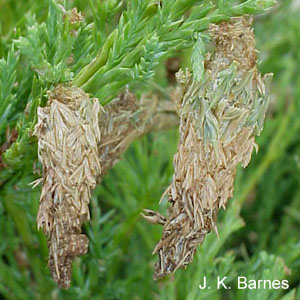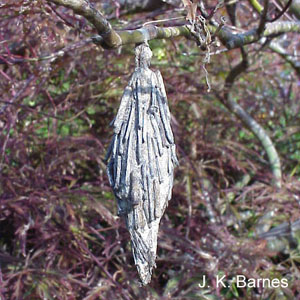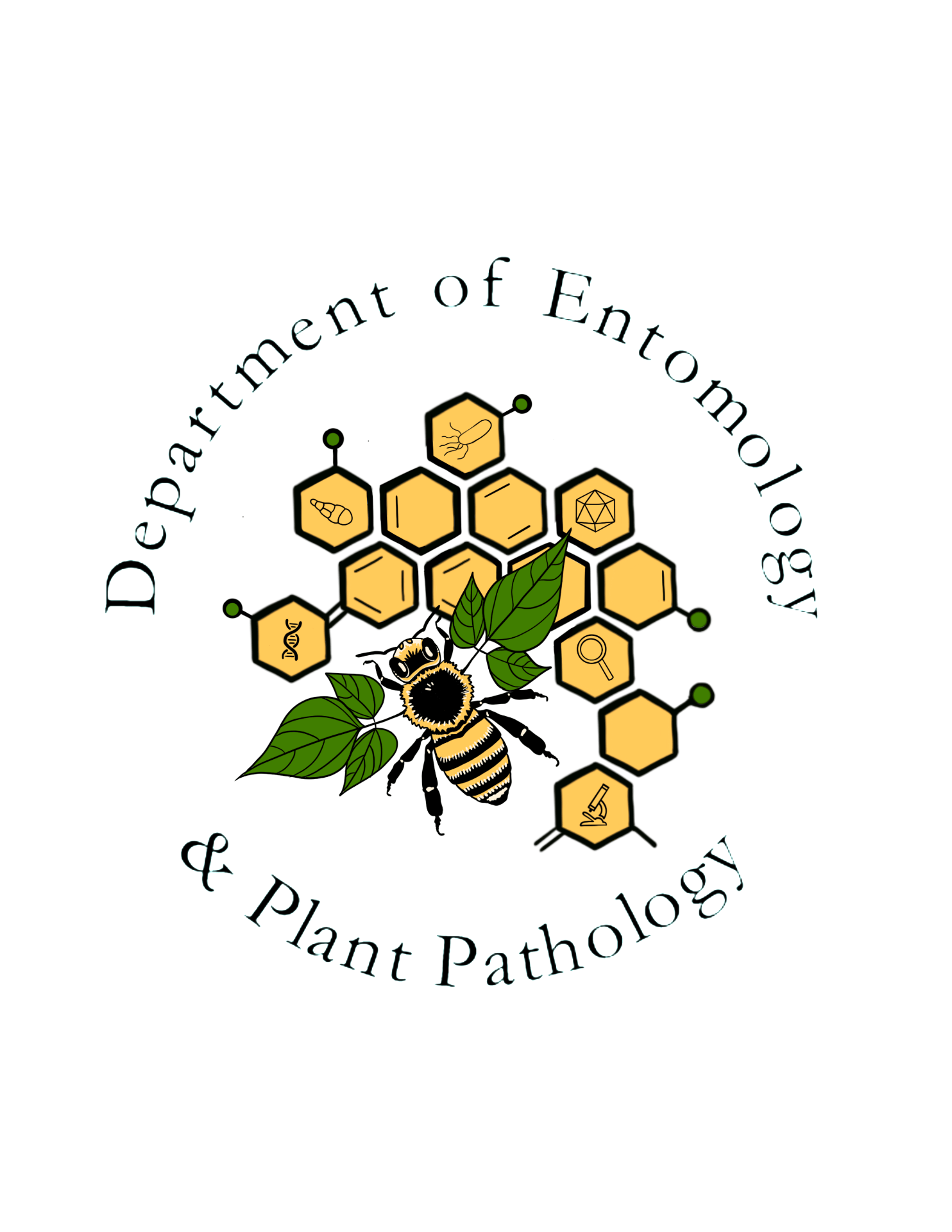Bagworm
Order: Lepidoptera
Family: Psychidae
Genus and species: Thyridopteryx ephemeraeformis (Haworth)



Bagworms are among the most important pests of ornamental trees and shrubs in the eastern United States. They are native to North America, and they have only one generation per year. The caterpillars construct conical cases – or bags –around themselves and enlarge them as they grow. The cases consist of consist of silk with attached bits of vegetation from the host shrub or tree. The larvae extend their head and thorax, including the legs, from the upper end of the bag while crawling about and feeding on the host plant. Mature larvae attach their cases to a branch with a band of silk. Both sexes pupate within the cases in late summer. Adult males, which have wings, eek out wingless, caterpillar-like females still sheltered within their cases. The male inserts his abdomen into the lower opening of the female case to mate. The female lays eggs inside her shelter, often nearly filling the cavity. The eggs winter in the female cases.
Although encased larvae can achieve some limited movement, truly effective dispersal is accomplished through ballooning by young larvae. Freshly hatched larvae drop on silken threads that are caught by the wind and carry the larvae to new habitat downwind. A ballooning caterpillar cannot be overly fussy about its host plant. Bagworms have been recorded feeding on over 125 different species of woody plants in 45 families, although in Arkansas it seems to show a special fondness for eastern red cedar, Juniperus virginianus, and it can be a serious pest of junipers, arborvitae, and other trees and shrubs planted in the landscape. Defoliation by bagworms can turn the landscape unsightly and may even kill the host.
Bagworms can be controlled by hand picking and destroying them, by use of the bacterial spray Bt, or by use of a variety of chemical insecticides.
